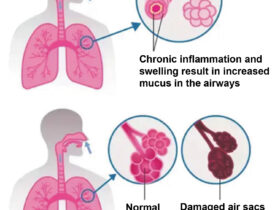By Derek P. Wimmer, PA-C
 Arthritis represents a major orthopedic challenge affecting millions worldwide. As treatment options evolve, both direct stem cell therapy and stem cell-derived exosomes are emerging as complementary approaches for addressing different orthopedic conditions, each with specific applications depending on the nature and location of the disease.
Arthritis represents a major orthopedic challenge affecting millions worldwide. As treatment options evolve, both direct stem cell therapy and stem cell-derived exosomes are emerging as complementary approaches for addressing different orthopedic conditions, each with specific applications depending on the nature and location of the disease.
Orthopedic Manifestations of Arthritis
Different forms of arthritis present distinct orthopedic challenges:
Osteoarthritis (OA): Involves progressive cartilage breakdown in weight-bearing joints, leading to bone-on-bone contact and joint space narrowing.
Rheumatoid Arthritis (RA): Causes systemic inflammation that erodes cartilage and bone, often resulting in widespread joint deformities.
Post-traumatic Arthritis: Develops following joint injuries, with focal cartilage damage and altered biomechanics.
Spinal Conditions: Including facet joint arthropathy and degenerative disc disease present unique structural challenges in the vertebral column.
These conditions share common pathologies but differ in their localization and inflammatory profiles, potentially benefiting from different regenerative approaches.
Stem Cells for Localized Joint Conditions
Direct stem cell therapy, particularly mesenchymal stem cells (MSCs), shows promising applications for localized joint pathologies:
When injected into joints, MSCs can differentiate into chondrocytes, release anti-inflammatory factors, and recruit local progenitor cells. Their larger size allows them to remain in the joint space longer, providing sustained therapeutic effects.
Stem cell applications appear particularly suited for:
. Focal cartilage defects in osteoarthritis
. Post-traumatic joint injuries
. Weight-bearing joints like knees and hips where
direct delivery offers concentrated effect
The physical presence of stem cells in the joint environment provides both cellular replacement potential and a sustained release of regenerative factors directly where needed most.
Stem Cell Exosomes for Systemic and Spinal Conditions
Exosomes—nano-sized vesicles released by stem cells—offer distinct advantages for certain orthopedic conditions:
These tiny biological messengers contain proteins, miRNAs, and growth factors that modulate inflammatory responses systemically and cross tissue barriers more effectively than whole cells. Their smaller size and non-cellular nature allow them to reach areas inaccessible to whole stem cells.
Exosome therapy shows particular promise for:
. Systemic inflammatory conditions like rheumatoid arthritis
. Spinal applications where precision delivery is challenging
. Conditions requiring both local and systemic effects
For rheumatoid arthritis, intravenous exosome delivery can address the systemic nature of the disease, potentially modulating immune responses throughout the body rather than just in individual joints.
Complementary Administration Approaches
The administration method often determines which therapy is more appropriate:
Intra-articular injections: Direct stem cell delivery is often preferred for larger joints, providing concentrated cellular therapy.
Intravenous (IV) delivery: Exosomes are typically more suitable for systemic administration, affecting multiple joints simultaneously.
Spinal applications: Exosomes may navigate the complex anatomy of the spine more effectively due to their smaller size.
Clinical Evidence and Future Directions
Current research supports a condition-specific approach:
. Studies show stem cells may have stronger effects for focal cartilage regeneration in major joints
. Exosomes demonstrate better systemic anti-inflammatory effects and ability to cross tissue barriers
. Combination approaches may offer synergistic benefits in complex cases
The field is moving toward precision regenerative medicine with condition-specific protocols that match the therapy to the orthopedic presentation and customized formulations based on the patient’s specific pathology.
Conclusion
Both stem cells and their exosomes represent promising approaches for orthopedic conditions related to arthritis. For localized joint issues, direct stem cell therapy often provides concentrated benefits, while exosomes may offer advantages for systemic conditions like rheumatoid arthritis and complex regions like the spine.
As research advances, a personalized approach that selects the appropriate regenerative therapy based on the specific orthopedic condition will likely yield the best outcomes. While current evidence is encouraging, patients should maintain realistic expectations as these therapies continue to evolve through ongoing clinical investigation.
Compassionate Healthcare
Our mission is to provide you with personalized, high-quality care. Be seen at your appointment time. Spend your entire visit with Derek Wimmer, PA. Private care unlike anywhere else. We are dedicated to not only improving but also to maintaining your health through preventative care and education while treating your chronic conditions.
Call today for more information.
Wimmer Orthopedics & Regenerative Medicine
239.829.4300
wimmerorthopedics.com
3380 Woods Edge Circle #104
Bonita Springs, Florida 34134









